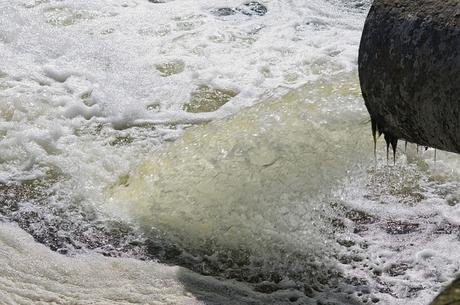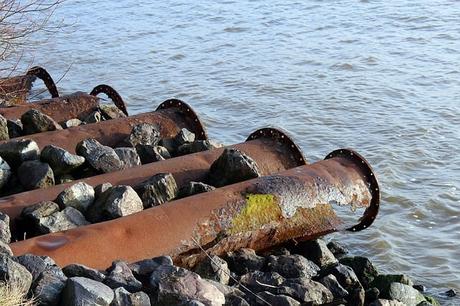What is Sewage Water?
Sewage water is wastewater from people living in a community. It is the water released from households after use for various purposes like washing dishes, laundry, and flushing the toilet, thus the name wastewater. The used water moves from the houses through pipes installed during plumbing. The sewage water then moves into sewers, either constructed by the house owner, or into a sewer facility set up by the municipality.
Mostly, sewage water consists of gray water and black water. Grey water is the waste water from washing either from bathing, dishes or laundry. Black water is the waste water from toilets. It is characterized by debris such as paper wrappings, sanitary products, soap residues, and dirt due to the chemical composition of the various waste materials. Plus, sewage water has a foul smell.

The concern is that it due to overpopulation in urban areas without proper planning, it has resulted in Sewage pollution, which poses a threat not only to the environment but also to human health. It also affects biodiversity, aquatic life, agriculture, and is a major contributor to eutrophication and an increase in Biological Oxygen Demand (BOD).
Causes of Sewage Water
1. The use of toilets as bins
Toilets are designated as fixtures for relieving nature calls. Sadly, careless people have turned toilets into deposit banks for waste materials such as papers, sanitary products and some even go to the extent of flushing plastics. These waste materials are the causes of blockages of sewage ways in most buildings. Blockages lead to over flooding of the toilets served by that sewer.
These waste materials then result in the clogging of water ways further along sewer lines. For example, plastics such as soap wrappings clog rivers and prevent further flow due to stagnation. As a result, it harbors harmful organisms and bacteria. The blockages also lead to air pollution caused by the spread of the foul smell from the sewer. Generally, sewer treatment plants face a lot of hardship due to blockages and the foreign material present in the wastewater thereby causing sewage pollution.
2. Cooking fats
Kitchen products have a lot of fats and oil. Greasy dishes are also washed in kitchen sinks. These materials are very fast at accumulating at the walls of the pipes where they form coverings that reduce the diameter of the pipe system which drain wastewater into the sewer.
Continued disposal of fats, oil and grease in sinks subsequently leads to complete blockage of the sewage system. This is even more hazardous than the blockage caused by toilets. For this blockage, no amount of cleaning can lead to the removal of the layered cover. This will warrant new installation of a pipe system, which is cost- bearing.
Also, this leads to flooding of houses as well as pollution caused by bad sewage odours. When the pressure of wastewater is high in a pipe that is clogged with fats, the obvious result is bursting of pipes which can lead to a messy situation in houses.
3. Overcapacity of wastewater
Sewers are built to accommodate a certain volume of wastewater. Nevertheless, there are various reasons why sewers overflow. For starters, there are contractors who on construction of buildings end up connecting the sewage system of the new building to the existing sewer made for another residential building.
This leads to overflowing of the sewer which is hazardous to human health and can cause acute viral, bacterial and parasitic diseases like giardiasis, typhoid, gastroenteritis, and Hepatitis A.
4. Flooding
Flooding is also another factor that increases waste water. When there is excessive rain, as the water seeks for a pathway, it seeps into sewers and mixes with the waste water leading to more wastewater in the sewer. If the volume of the sewer is small, chances are that the sewer system will be unable to hold the increasing volume of water thereby causing sewer pollution.
5. Improper handling of wastewater
It is a practice commonly done by industries. Industries use a lot of water, and for this reason, release most of it as wastewater. As it is expected, the industries should treat the same water and bring it back into the industry machinery for reuse. However, most industries operating in areas with lax environmental policies release this raw sewage into the waterways without the least bit of treatment.
When this happens, the people living downstream suffer the most from the effects of sewage pollution. Further, there is subsequent death of aquatic life due to the release of harmful toxins that interfere with the normal activities of sea life. For instance, the release of ammonia is toxic to plants. They easily oxidize with the oxygen present in water leading to deprivation of oxygen to aquatic life.
6. Root infiltration
Tree roots can be a cause of pollution of wastewater. They enter sewer lines at certain points and crack the pipes or underground sewer tanks leading to seeping of filthy waste water out of the sewers.

Process of Treating Wastewater
There is a dire need for sewers to be emptied owing to the increasing use of water by people. Therefore, treatment is essential. It ensures the water released into the local water ways such as rivers is safe and clean with an aim of ensuring it does not cause harm to the people or the aquatic life. To ensure the waste water is clean and safe, there are various steps involved in the treatment process. These include:
1. Pre-treatment
It is the very first step just before the actual treatment. It has two parts with the first one involving screening of large materials such as bottles, cans, logs and rags. The second part uses a comminutor which is a mechanical device that has cutting edges that reduce solids to smaller particles.
After this, the water passes through the grit chamber where the smaller solid materials such as sand, pebbles and broken glass are removed. This step is essential since it prevents the entry of large waste material into the water treatment plant leading to clogging or blockages.
2. Primary Treatment
The wastewater at this point is devoid of solid materials and grit but has dissolved organic and inorganic solids which are treated at this stage. The step takes place in a large sedimentation tank where these particles are further removed by gravity. The wastewater stays here for a while so that all particles settle on the floor of the tank forming a solid known as sludge.
3. Secondary Treatment
In this stage, there are two ways to go about it. That is the use of trickling filters or activated sludge. The trickling filters way entails passing water through a bed of coarse stone. This coarse stone can be substituted by the use of perforated plastic material. Both of these materials contain microbes which grow on the surface.
High concentration of oxygen is passed to the microbes which are able to break down the organic materials that may be present in the wastewater. The wastewater now continues down the filters to the secondary clarifiers where the microorganisms settle out for disinfection. The second method involves the use of activated sludge. The wastewater is mixed with the microbes and aeration is facilitated.
Like in the filters, the microbes feed on the organic molecules and form the activated sludge. The wastewater now flows into an aeration tank where more aeration of the sludge is done. It then flows to the secondary clarifiers as a mixture known as mixed liquor, where it settles out for disinfection.
4. Tertiary Treatment
The secondary treatment does away with most bacteria and viruses. Nevertheless, components such as nitrogen, phosphorus and others may still be present in the wastewater. This stage removes these pollutants. Nitrogen is a nutrient that facilitates the growth of algae and water hyacinth in water.
Moreover, in the form of ammonia, nitrogen demands a lot of oxygen and, therefore, leads to competition for the gas with sea plants and fish, thus deteriorating aquatic life. As such, it is removed through a series of processes such as nitrification where ammonia is oxidized to a nitrate and followed by denitrification, where the nitrate is broken down to nitrogen which is released to the atmosphere.
Others that passed the secondary treatment are sequestered by carbon absorption where there is almost 98% removal of organic material. Water processed through this stage is ready for reuse but as industrial water and can also be released to rivers and other water ways. Further cleaning can lead to the use of this water for basic purposes such as cleaning.
5. Sludge Treatment
The solid deposits of sludge can be used for various uses. They can be used as fertilizer for plants. In addition, further alternative processes can lead to production of energy that can be added to the areas’ energy grid.

